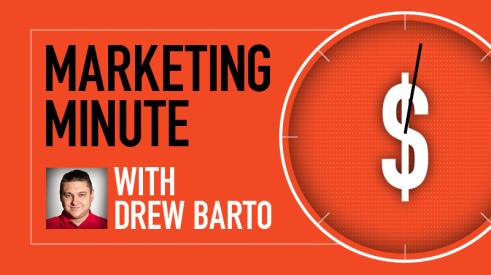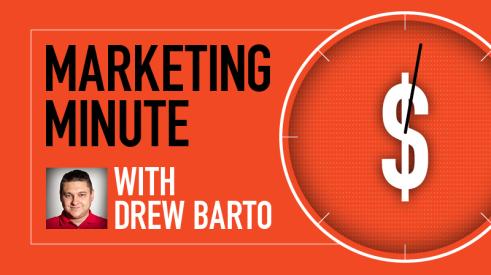|
When the stimulus package was passed in February, it was greeted as a bonanza for remodelers because of its energy-retrofit tax credits and other funds dedicated to remodeling public and private buildings.
Six months in, the general public’s and remodelers’ reaction to the stimulus are mixed. Some remodelers say they are seeing great returns from the stimulus, while others say it has had no impact at all. That reflects the views of the population at large, as well. Recent surveys show that barely half of Americans think the stimulus package has succeeded or will succeed in restoring the economy.
 |
Whatever their opinions, remodelers agree that the most important factor in judging the stimulus’s success is whether or not it improves consumer confidence and the economy as a whole. After all, the impact of the tax credits was never meant to be industry-saving. The federal government estimated that the credits would result in an additional $6 billion in remodeling activity this year and next. That’s only a little more than 1 percent of the total remodeling market based on recent estimates. Off the fence?
Until customers feel better about the economy, they won’t buy, and no incentive is going to change that, says Michael Tenhulzen, president of Tenhulzen Remodeling in Redmond, Wash. (Consumer confidence was also rated by remodelers as the biggest factor in improving the remodeling market in this month’s Professional Remodeler research.)
Homeowners “come in, they have an idea, they give us the nod and they just can’t reach for their wallets,” Tenhulzen says. “Our closing ratio has really suffered because they just can’t get their minds around what the future’s going to hold for their home, for their investment, for their portfolio.”
Tenhulzen Remodeling promotes the tax credits to its past and potential customers through its Web site and e-newsletters, but the efforts aren’t generating much business. Although some clients are taking advantage of the credits, they are people who probably would have remodeled anyway, Tenhulzen says. The credits are also not as useful to a design/build company like Tenhulzen that specializes in larger remodels as the credits would be to a window-replacement firm, for instance, he says.
“There are one-line contractors that can go in and knock those things out more efficiently than we can,” Tenhulzen says. “On a $200,000 project, a few thousand isn’t really going to be enough incentive to move forward.”
Tim Englert, president of Tim Englert Construction, says most of his clients are taking advantage of the tax credits, although not many of them are undertaking the projects solely for that reason.
The full-service Wadsworth, Ohio, company is selling projects ranging from simple window replacements to large additions. Englert says there are basically three scenarios under which he’s getting the tax credit for his clients: large projects where clients can incorporate features, such as insulation or windows, to get the credits; window replacement to reduce energy bills; and window replacement to get the tax credits.
“The stimulus plays a role, but it’s not a major role,” Englert says. “In my world, there’re not many calls I get that are motivated by that.”
One problem with the stimulus, Englert says, is that the tax credits for windows are harder for larger remodelers to promote because the credits are for materials only and not labor. That means materials and labor have to be billed separately, making it difficult to get the necessary mark-up on projects and still compete with small operations.
“It works for the Home Depot guy, but not real remodeling contractors,” he says.
Like Tenhulzen, Englert says the most important thing will be if the stimulus improves the economy as a whole. Once people have more confidence in their jobs and the value of their homes, remodeling will come back, he says.
That sentiment is echoed by Bob Birner, vice president of Amazing Siding and Renewal by Andersen of Houston. The Tomball, Texas, window and siding firm has benefited from strong consumer confidence and stable home prices in the Houston area. That strong local market has kept the company busy and on track for an improvement over 2008.
“If people think that things are financially stable, they’ll invest their money,” Birner says. “Here their home is the best place to invest it in their minds.”
We recorded a podcast with Birner in March of this year, only weeks after the stimulus package passed, in which he said he expected the stimulus to greatly help his company. It’s difficult to say exactly why people are choosing to undertake projects, but Birner believes it is one of that factors that has made this a good year for the company.
“We’re seeing that it’s helping some,” he says. “It’s probably people that were going to remodel anyway, but it’s given them an incentive to do it now.”
On the other hand, some remodelers are getting a significant boost for their business from the tax credits.
Richard Ollie, owner of Richwood Additions in Cleveland, says the stimulus has “definitely helped” his business this year.
“It’s really picked things up,” he says. “We weren’t selling much the first few months of the year.”
Many clients are opting to expand their projects to take advantage of the credits.
“I’ll go out to sell just a patio door, and I’ll come back with five or six windows and a front door,” he says. “When you go into their home, they figure if they can get some money back they’ll go ahead and do some more.”
John Larson, vice president of Ron Boelter Window & Siding, experiences a similar situation, with clients taking projects off hold and opting for more expensive options because of what they see as “free money.”
“We have several clients who were indefinite on when they were going to do it saying now they’re ready to go,” Larson says. “People have applied this tax credit to get maybe a triple-pane window instead of a double-pane window; some are upgrading to a different line; some are doing more windows. At the same time, we are seeing people who were considering doing a partial home or a couple of windows saying they don’t mind doing all of them now because they’re going to get that subsidy.”
The company has spent heavily on advertising and marketing to get the message to potential clients as well as targeted past clients who may have only replaced some windows to make sure they’re aware of the available money.
“We’re putting more money into marketing,” Larson says. “I know a lot of companies are cutting back, but now more than ever you’ve got to spend more. Now’s not the time to put the money away.”
Window business is up 27 percent this year for the company, and Larson credits much of that to the stimulus package. Homeowners are very focused on energy efficiency and reducing heat bills in Minnesota, and the first thing many people think of is replacing windows. Combined with the tax credits, that has made this a great year for the Madison Lake, Minn., company.
“We expect this to continue for the rest of the year,” Larson says. “Normally, we see a dive in leads in July, and this year it’s the opposite. We’re seeing an increase in leads.”
The tax credits have helped the company to easily beat its budget for the year after a precipitous decline in business at the end of 2008. Going into this year, the company was budgeting for a “cautious goal” of flat sales compared to last year. Even after the stimulus passed, the company’s management team only predicted a 10 percent bump from 2008, a mark they’ve easily surpassed, Larson says.
RELATED LINKS
Jim Haughey’s Reed Construction Data blog
10 FAQs About the Stimulus
Stimulus Hot Topic on HouzingZone
|
Opinions are mixed on whether the tax credits are making a difference
Add new comment
Related Stories
How to Get More Leads with a Stronger Remodeling Brand
Discover how to build a strong brand for your construction company, and learn key strategies to differentiate and attract better leads
Building A Small Projects Division from the Ground Up
Through hard work and careful strategy, Harth Home Services has seen big growth
Helping Remodelers 'Get Their House In Order'
From remodeler to NARI executive to industry consultant, Diane Welhouse uses her expertise to help business owners
Finding Success Online and on the Jobsite
The Molitors started with humble blog beginnings, and now the couple runs an unlikely two-folded business for social media marketing and design-build construction
How Much Are Window and Roofing Contractors Spending on Marketing?
Director of Home Improvement Drew Barto reveals the percentage of revenue replacement window, door, and roofing contractors of various sizes are spending on marketing in 2023
4 Things for Remodelers to Understand About Google Analytics 4
The new era of Google Analytics is here, and it's set to help you make better marketing decisions through in-depth metrics
The Empty Chair: Customer Experience Will Differentiate Your Business
With all signs pointing to a softer market, how can remodelers remain strong and different from the rest? Pro Remodeler's Director of Content Erika Mosse shares real examples.
Marketing Minute: How to Overcome a Drop in Demand
Director of Home Improvement Drew Barto shares tips on how to survive and thrive in periods of lower demand for your products or services
Do You Have a Healthy Marketing Mindset?
Use your marketing calories wisely and form healthy habits today to keep your business in shape












